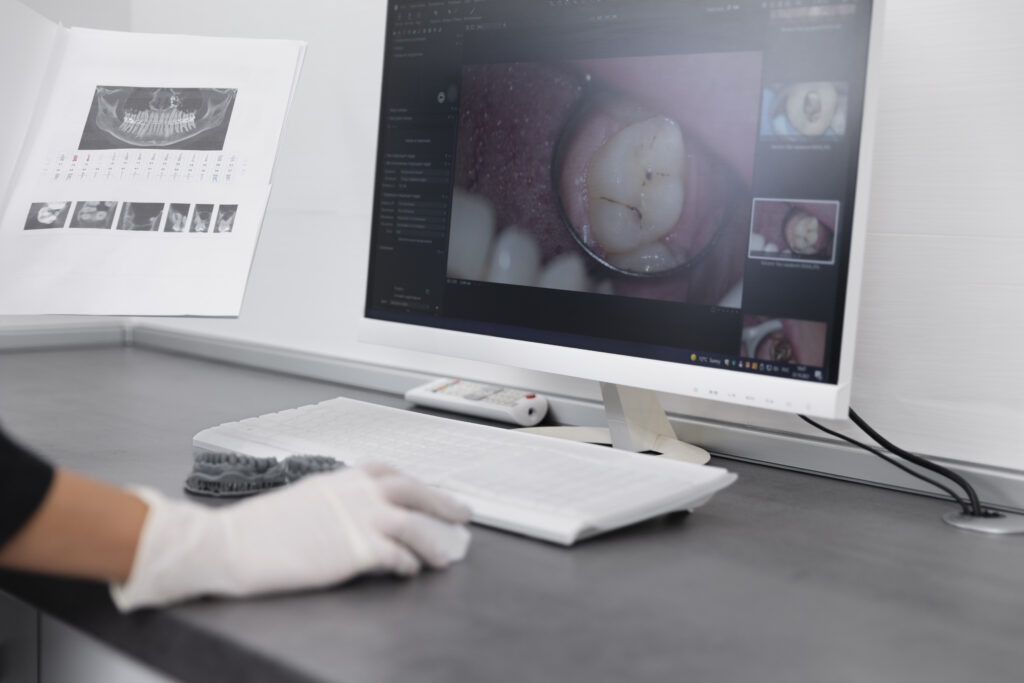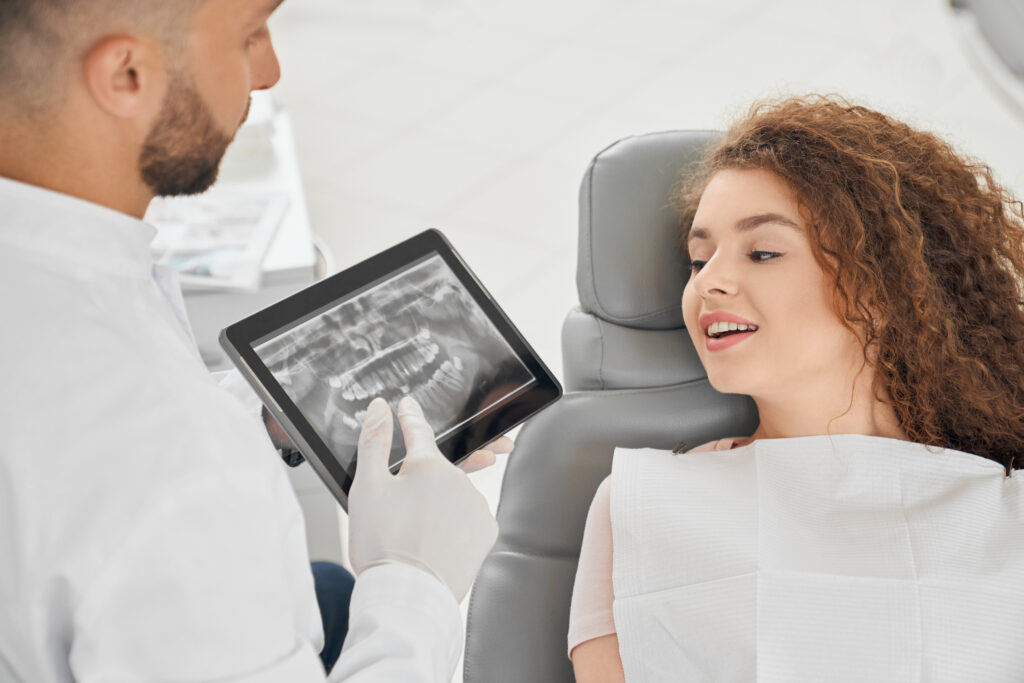CEREC CAD-CAM (Chairside Economical Restoration of Esthetic Ceramics – Computer-Aided Design and Computer-Aided Manufacturing) is a revolutionary dental technology that enables specialists to design, fabricate, and place dental restorations in a single visit. By integrating advanced digital scanning, precise design software, and high-quality milling systems, CEREC CAD-CAM has transformed restorative dentistry, offering accuracy, efficiency, and patient-centered care.

The Evolution of Digital Dentistry
Traditional dental restorations often required multiple visits, including impressions, temporary crowns, and laboratory fabrication. These processes were time-consuming and could introduce inaccuracies.
The development of CEREC CAD-CAM technology streamlined restorative dentistry by enabling digital impressions, computer-aided design, and in-office milling of ceramic restorations. This integration allows dentists to provide same-day crowns, inlays, onlays, and veneers without compromising precision or aesthetics.
How CEREC CAD-CAM Works
The CEREC CAD-CAM system involves three core steps:
- Digital Scanning
A high-resolution intraoral scanner captures the patient’s dental anatomy, creating a precise 3D model of the affected tooth or teeth. - Computer-Aided Design (CAD)
Specialized software is used to design the restoration digitally. The system allows customization of shape, size, occlusion, and esthetics according to the patient’s unique anatomy. - Computer-Aided Manufacturing (CAM)
The digital design is sent to a milling unit, which fabricates the restoration from high-quality ceramic or composite blocks. The restoration is then polished, finished, and placed in the patient’s mouth during the same visit.
Key Advantages of CEREC CAD-CAM Technology
- Same-Day Restorations
Patients can receive crowns, inlays, onlays, and veneers in a single appointment, eliminating the need for temporary restorations and multiple visits. - High Precision and Fit
Digital scanning and milling ensure restorations fit perfectly, reducing the risk of gaps, misalignment, or postoperative sensitivity. - Enhanced Aesthetics
Ceramic materials provide natural color, translucency, and durability, improving the overall appearance of restorations. - Patient Comfort
Digital impressions eliminate the need for traditional molds, which can be uncomfortable and messy. - Streamlined Workflow
CEREC CAD-CAM reduces laboratory dependence, accelerates treatment times, and allows dentists to maintain control over the restoration process from start to finish.

Applications Across Dentistry
Crowns and Bridges
CEREC CAD-CAM provides durable, well-fitted crowns and bridges in a single visit, ensuring optimal function and aesthetics.
Inlays and Onlays
Precise restorations restore damaged or decayed teeth while preserving healthy tooth structure.
Veneers
Custom-designed veneers improve the appearance of teeth with minimal preparation and reduced chair time.
Implant Restorations
Digital design and milling allow accurate fabrication of implant-supported restorations with improved fit and alignment.
Integration of Advanced Digital Technology
Modern CEREC systems feature high-speed milling units, advanced ceramic blocks, and AI-assisted design software. AI algorithms can assist in occlusion analysis, contour optimization, and color matching, further enhancing the precision and esthetics of restorations.
Challenges and Future Perspectives
While CEREC CAD-CAM offers numerous advantages, it requires significant investment in equipment and training. Mastery of digital design software and milling techniques is essential for optimal outcomes.
Future innovations include faster milling machines, integration with 3D printing technology, enhanced AI-assisted design, and expanded material options, allowing more complex restorations with improved durability and natural appearance.
The Broader Impact on Medical Technologies
CEREC CAD-CAM exemplifies the convergence of digital imaging, computer-aided design, and advanced manufacturing in dentistry. By offering precise, same-day restorations, it improves patient satisfaction, reduces treatment time, and sets new standards for restorative care. Its principles are also influencing broader medical and dental technologies, inspiring more efficient, patient-centered solutions.
Conclusion
CEREC CAD-CAM has transformed restorative dentistry by combining digital scanning, computer-aided design, and precise manufacturing to deliver high-quality, same-day restorations. Its integration of advanced technology enhances accuracy, aesthetics, and patient experience, making it a cornerstone of modern dental care.


